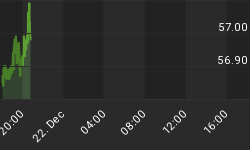I always enjoyed magic tricks as a child, so when the movie The Prestige was released in 2006, I was eager to see it. Early on in the film, a narrator describes the three parts of every magic trick. These parts are as follows:
1) The Pledge - The magician shows you an ordinary object -- say a deck of cards or a rabbit.
2) The Turn - The magician takes the ordinary item and makes it disappear.
3) The Prestige - Making something disappear isn't enough. In the third act, the object is brought back from out of nowhere to the sounds of applause from an audience eager to be duped.
Achieving above-market returns in deep value stocks is similar to performing a magic trick. The pledge is simply the ordinary stock market, where shares of publicly held companies are readily available for purchase. Audited financial statements on these companies are prepared in great detail for all potential investors to review. The turn involves periodic bear markets, where an investor's capital vanishes into thin air. During the turn, some companies become so beaten down in value that they trade below liquidation value. These companies, for all practical purposes, are now on paper worth more dead than alive. The prestige is when an audience of enterprising investors watches as these select beaten-down stocks rise from the grave as if under some enchantment. What I'm describing is a compressed view of a timeline of the deep value investing magic trick that investors can learn provided they have the patience and discipline to execute it properly.
The first step in learning the deep value investing magic trick is to calculate a company's liquidation value by measuring its net current asset value, a calculation that Benjamin Graham popularized. Imagine a financial wizard who is schooled in the art of Graham's deep value mysticism, entertaining an audience of skeptical investors:
"Ladies and Gentleman, the deep value investing strategy I'm about to share with you was popularized in the 1930s by the legendary financial wizard, Benjamin Graham. Imagine the net worth of a group of public companies trading at a price point worth more dead than alive. Can they come back to life and outperform the stock market? Is it possible these select securities having fallen so deep into the abyss they are doomed to failure, much less outperform the stock market?"
The skeptical audience can be tantalized even further by being presented the dismal statistics below, gleaned from the historical performance data of stocks trading below net current asset value.
Facts teased from the performance results of the net current asset value approach to stock selection:
Let's put some Houdini handcuffs on an investor and only allow changes to be made to a portfolio one day a year.
Let's also restrict the maximum amount of capital allocated to any one stock and limit the weighting to five percent. Because of this constraint, roughly 75% of the years during the study period (1952-2009) resulted in a portion of the funds sitting idle. This constraint handicaps the performance of our portfolio even further when compared with a stock index fund.
During the study period of 1952-2009, the worst one-year holding period of our deep value approach to stock selection occurred in 1974. The portfolio lost more than -21% of its value.
Any buy or sell order placed in the deep value portfolio incurred a 0.63% transaction fee, chiseling away at performance when compared to a broad stock market index that incurred no such transaction fees.
As with any stock selection filter, not all rabbits picked out of the value investing hat turn out to be winners. Reviewing the worst-performing individual stock in the net current asset value portfolio each and every year showed an average loss of -23%.
This laundry list of facts regarding the performance of our portfolio of stocks trading below net current asset value makes the financial wizard's feat even more impressive if one's objective is to outperform an index fund. It also makes for good showmanship when sharing these dismal statistics with a skeptical audience. Pushing an audience of astute investors further away from the notion that a deep value approach to stock selection can outperform an index fund does make for good fun. The trap is now set for act three, the prestige in the realm of deep value necromancy.
The graph below shows the performance results of Graham's magical portfolio of deep value stocks in comparison with a large- and small-cap index fund.

As indicated on the chart, stocks trading below net current asset value outperform both a large- and small-cap index fund over the long term. Bravo. This financial magic is truly impressive. The performance of purchasing Graham's net current asset value stocks has been tested over a 60-year time period (1952-2009). For aspiring value magicians, feel free to review the study in more detail.















